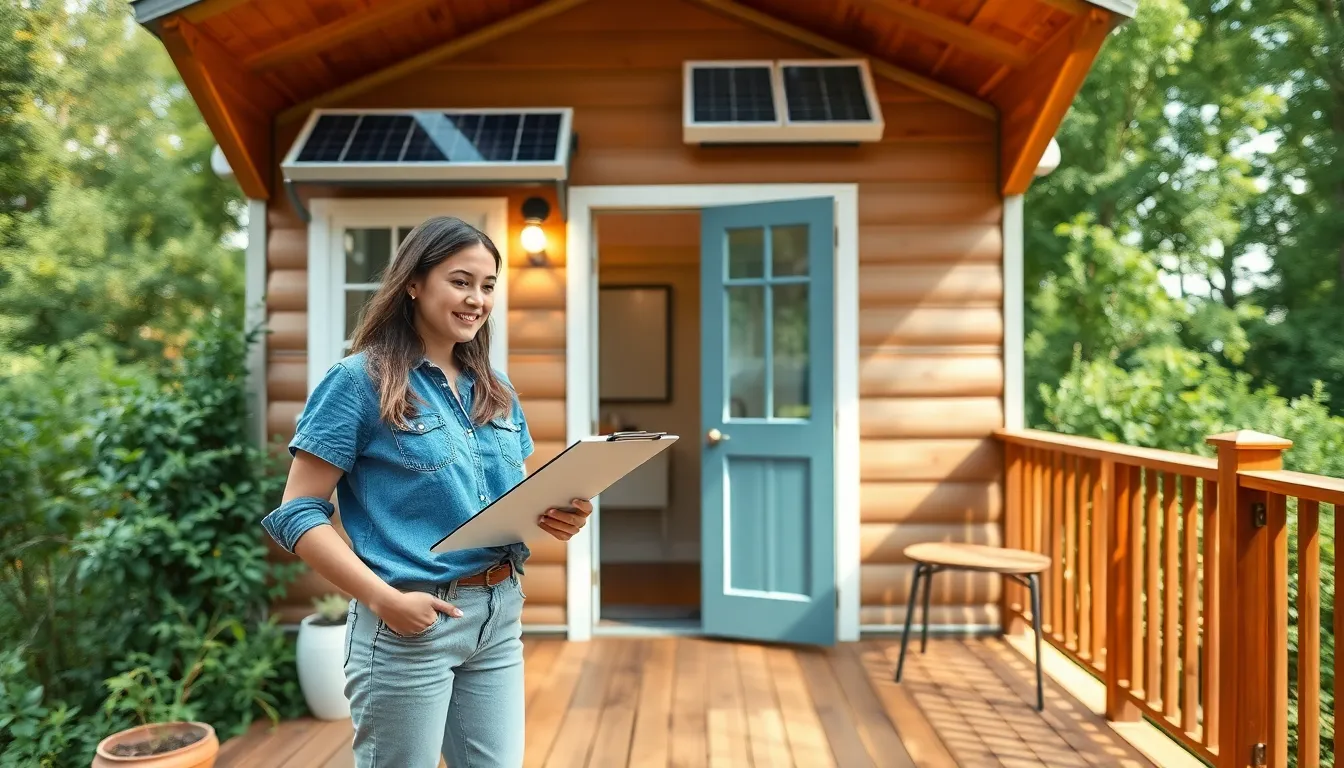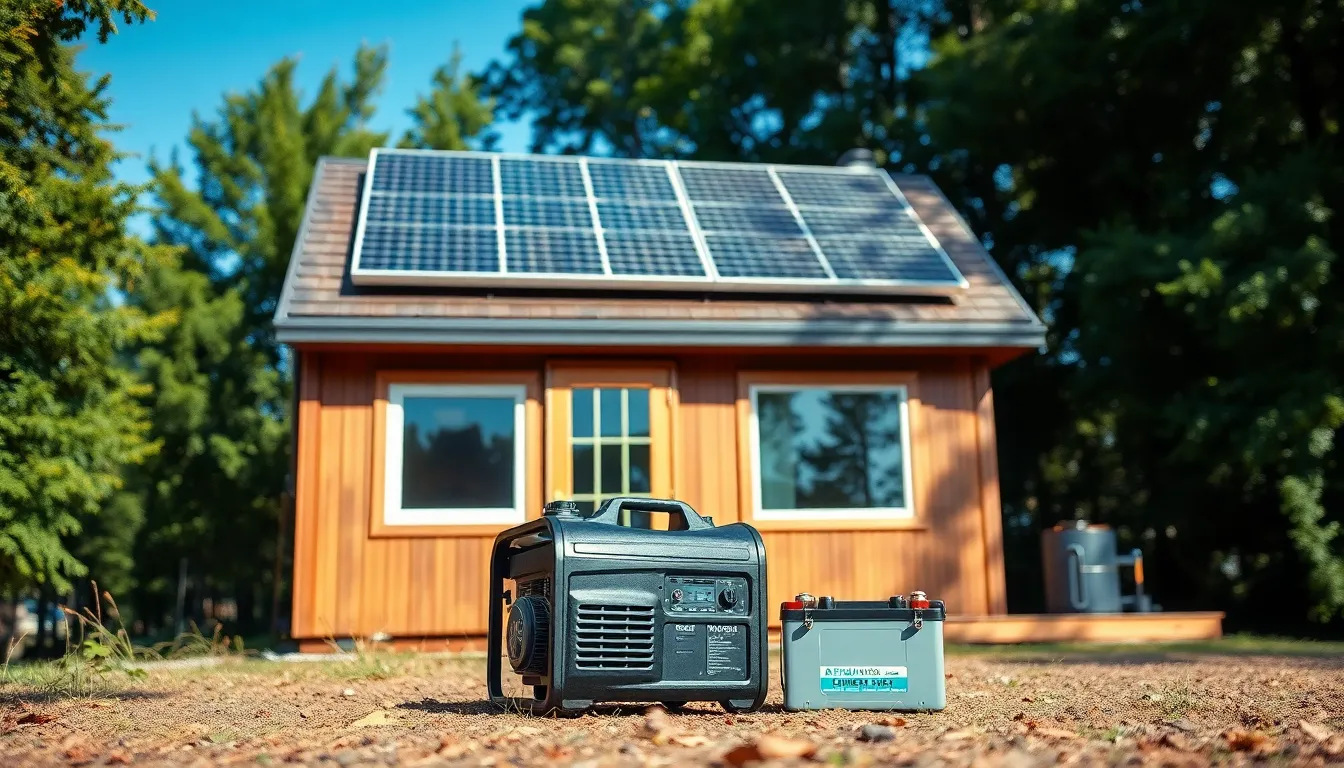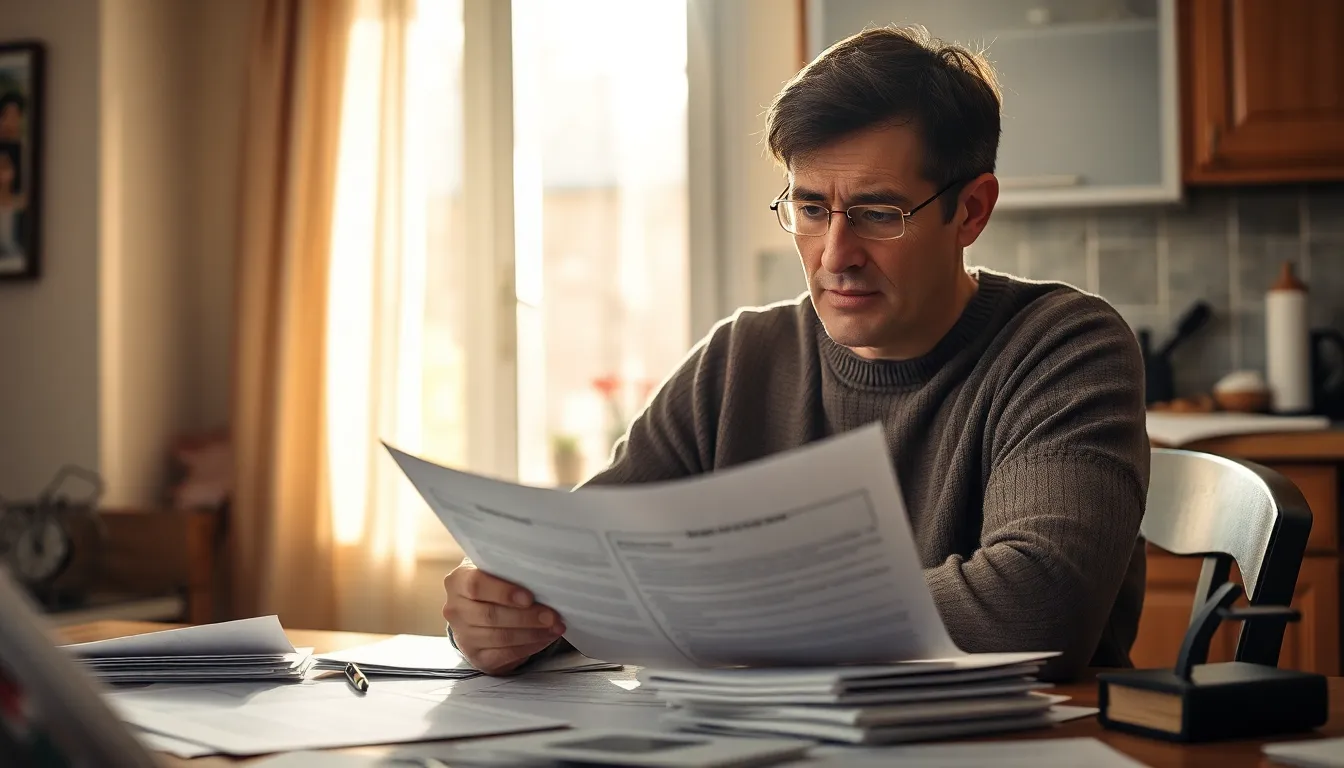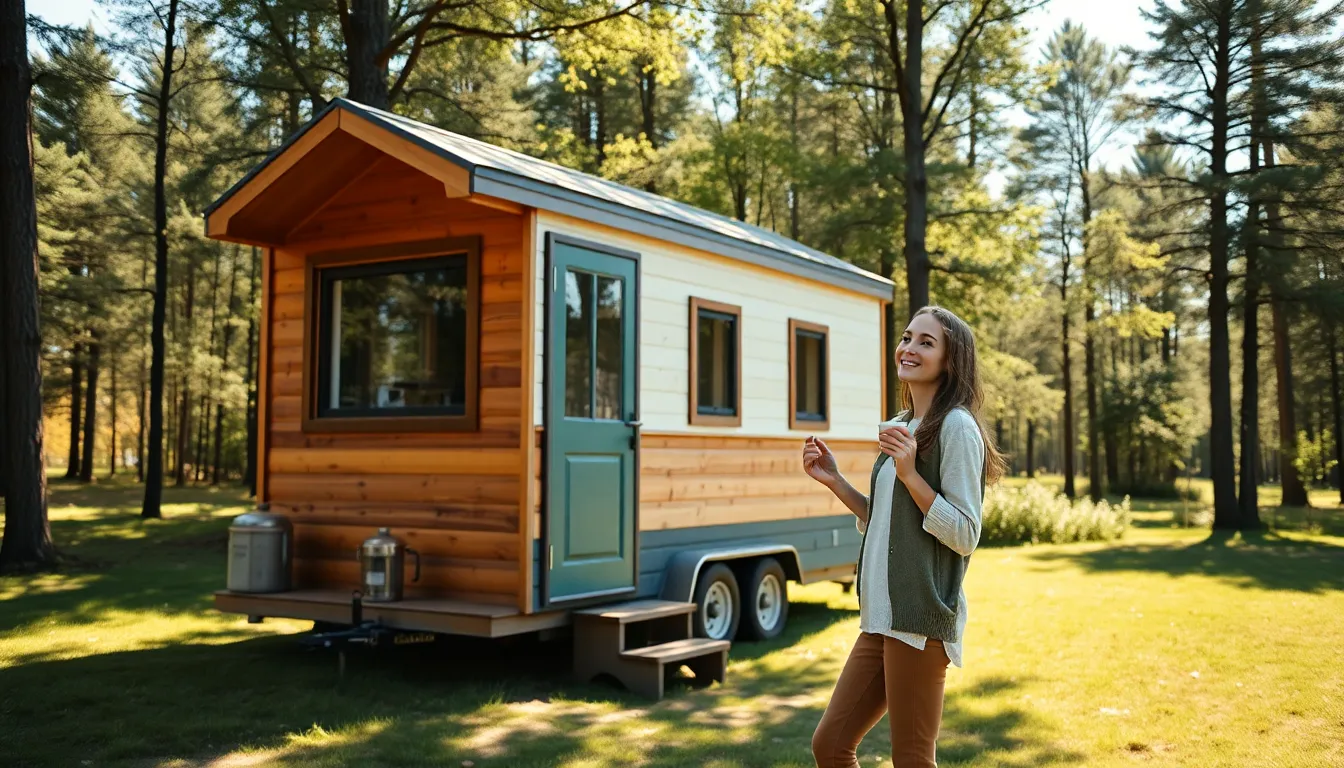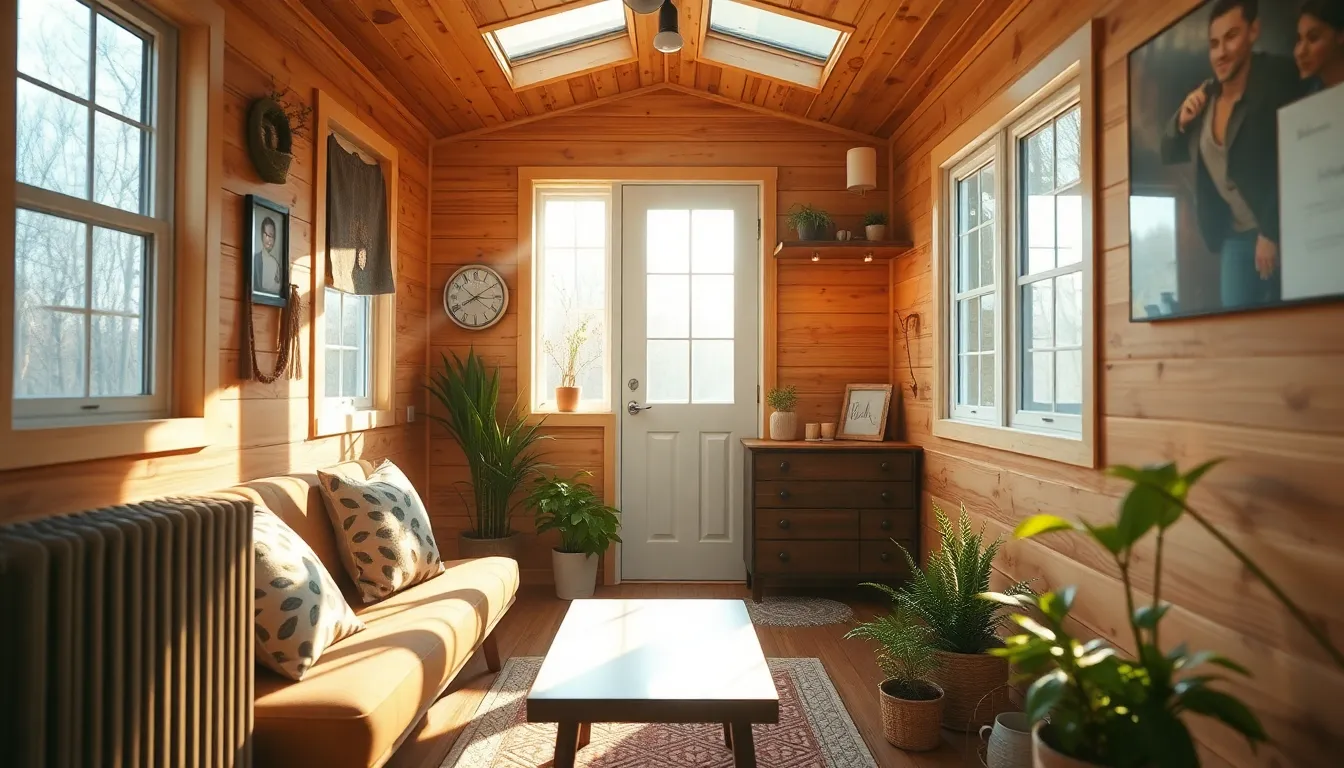Imagine living in a cozy tiny house, where every square foot is a testament to minimalist living. But wait—how do you power this pint-sized paradise? Enter the tiny house electric setup, the unsung hero of compact living. It’s not just about keeping the lights on; it’s about creating an energy-efficient haven that runs smoother than a well-oiled machine.
Table of Contents
ToggleOverview of Tiny House Electric Setup
Tiny house electric setups require careful planning to maximize efficiency and functionality. Various components contribute to an effective system. Solar panels, for example, harness sunlight to provide renewable energy for daily use. These panels can significantly reduce dependency on traditional power sources.
Battery storage systems store excess energy generated during the day. They enable continuous power supply during cloudy weather or nighttime. Properly sized batteries ensure consistent energy availability tailored to individual needs.
Wiring systems in tiny houses differ from standard homes. Compact spaces necessitate specific electrical codes and standards to maintain safety. Contractors recommend using high-quality materials to prevent issues such as overloads and shorts.
The distribution panel plays a vital role in managing electrical load. This panel connects all circuits and protects against electrical hazards. Proper circuit planning is essential for minimizing energy waste and ensuring reliability.
LED lighting fixtures enhance energy efficiency in tiny homes. These lights consume less power and provide longer lifespans than traditional bulbs. Appliance selection also impacts energy consumption. Energy-efficient appliances optimize power usage without sacrificing functionality.
Monitoring systems help track energy production and consumption. Smart meters provide real-time data, enabling better management of electricity use. Adopting these technologies supports sustainable living, aligning with the ethos of tiny house owners.
Effective insulation further enhances energy efficiency, reducing heating and cooling demands. Selecting the right electric heating systems contributes to overall comfort. Understanding the unique requirements of a tiny house electric setup fosters a functional and eco-friendly lifestyle.
Essential Components of Tiny House Wiring
A tiny house electric setup relies on several critical components that ensure functionality and efficiency. Understanding these elements helps create a sustainable living environment.
Solar Power Systems
Solar power systems serve as a primary energy source for many tiny houses. These systems typically consist of solar panels, inverters, and charge controllers. By converting sunlight into electricity, solar panels provide clean energy. An inverter then transforms this direct current (DC) into alternating current (AC), making it usable for appliances. Installation of an appropriate charge controller ensures battery systems charge effectively, preventing overcharging. Many tiny homeowners combine solar with grid power for flexibility and reliability.
Generator Options
Generators offer a backup power solution for tiny houses, especially in off-grid setups. Options vary between portable gas generators and more permanent diesel generators. Portable generators supply immediate power during emergencies, ideal for short-term use. Diesel generators typically provide more sustained power for extended periods. Choosing a generator depends on specific energy needs and usage frequency. Regular maintenance keeps these units functional and efficient, ensuring they serve their purpose when required.
Battery Storage Solutions
Battery storage solutions store energy generated from solar panels or generators. Lithium-ion batteries are popular due to their efficiency, longevity, and compact size. These batteries enable homeowners to utilize stored energy during nighttime or cloudy days. Lead-acid batteries, while cheaper, offer shorter lifespans and require more maintenance. Determining the right battery capacity depends on energy consumption patterns. Proper installation and monitoring, ensure optimal performance and extend battery life.
Electrical Planning and Design
Electrical planning in a tiny house requires attention to detail. Understanding energy needs plays a crucial role in creating an efficient electric setup.
Load Calculation
Load calculation determines the total power requirements for the tiny house. Start by listing all electrical devices, including appliances and lights. Assess their wattage and calculate the total load by summing the wattages of these devices. Factor in peak usage to ensure the electrical system can handle surges. For example, if total wattage reaches 3,000 watts, select a suitable inverter and battery storage system. This helps avoid overloading circuits and enhances safety. Consider future needs by allowing for additional devices. Effective load calculation promotes both functionality and comfort in tiny living spaces.
Circuit Design Tips
Effective circuit design ensures the tiny house electrical setup operates smoothly. Begin with a clear layout of electrical components, including the distribution panel, outlets, and switches. Use dedicated circuits for high-wattage appliances, preventing overloads on shared circuits. Ensure wire gauge aligns with electrical loads; thicker wire supports higher amperages. Place outlets strategically, allowing for convenient device placement without excessive extension cords. It’s essential to comply with the National Electrical Code (NEC) for safety. Implement circuit labeling for easy identification during maintenance. A well-designed circuit layout streamlines energy use and minimizes potential hazards.
Safety Considerations
Safety is paramount in any electrical setup, especially in tiny houses where space and resources are limited. Adhering to safety standards ensures a reliable and secure electricity supply.
Wiring Safety Standards
Wiring safety standards play a crucial role in tiny house electric setups. Compliance with the National Electrical Code (NEC) ensures circuits are designed to handle specific loads without risk of overheating or failure. Utilizing proper gauge wiring for different applications prevents potential hazards. Grounding techniques protect against electrical shocks, while GFCI outlets are essential in wet areas such as kitchens and bathrooms. Understanding these standards aids in preventing electrical fires or failures, contributing to a safe living environment.
Common Mistakes to Avoid
Avoiding common mistakes is key for a safe tiny house electrical setup. Overloading circuits by connecting too many devices can lead to overheating or fire hazards. Additionally, neglecting load calculations before installation often results in insufficient service for appliances. Failing to properly secure wiring and connections may lead to shorts or disconnections. Installing non-compliant equipment or bypassing safety measures significantly increases risks. Prioritizing adherence to safety guidelines supports a more efficient and secure electrical system.
Conclusion
A well-planned tiny house electric setup is crucial for maximizing efficiency and comfort in a compact living space. By incorporating renewable energy sources like solar panels and utilizing advanced battery storage systems, tiny house owners can achieve a sustainable lifestyle.
Prioritizing safety through proper wiring and adherence to electrical codes ensures a secure environment. With careful attention to load calculations and circuit design, individuals can avoid common pitfalls that lead to hazards.
Ultimately, a thoughtfully designed electric system not only enhances the functionality of tiny homes but also supports a greener way of living. Embracing these principles allows for a harmonious balance between minimalism and modern convenience.

